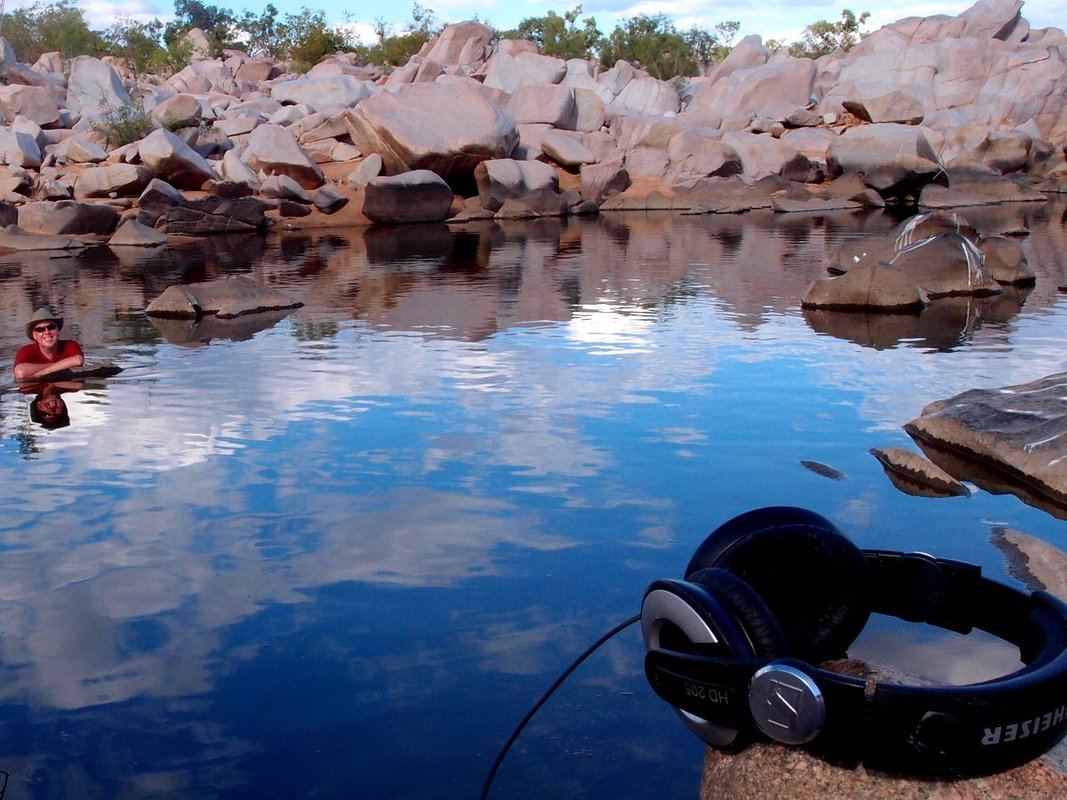
Listening to the environment – singing birds and chirping crickets – is increasingly used as a means of monitoring change in ecosystems. Together with two colleagues from Melbourne and Paris, Griffith University senior lecturer has led a major drive to kickstart acoustic monitoring in freshwater systems.
“Monitoring freshwater ecosystems is time consuming and costly. Using acoustics enables us to observe what is going on 24/7,” explains collaborator Dr Camille Desjonqueres.
Experienced in listening to grunting fish and creaking waterbugs, Dr Linke – from Griffith’s – and his team assembled the key researchers from Europe, North America and Australia to compile a full issue of the leading journal in their field.
“We took over the editorial desk of for an issue,” Dr Linke said. “We invited the biggest names in the field to help us tackle some of the key steps towards operationalising acoustics in the freshwater realm.”
In their editorial, the researchers identified these steps to progress the field.
“We often arrive at a site and have no idea what produces the sounds we are hearing. A few articles – by our group, but also by one of the US-based gurus in the field – describe how sounds are identified and characterised,” says Dr Toby Gifford, formerly a lecturer at the Griffith Conservatorium.
Other articles deal with automatic sound processing. Dr Gifford, a global leader in real-time sound processing, explains: “We aim to build a Shazam for fish – a fish swims by and we can identify it in real-time.”
Another obstacle is spatial and temporal variation.
“Everybody knows the bird dawn chorus,” Dr Desjonqueres said. “Underwater soundscapes have similar dynamics.
“Some articles in the issues, including one by our student Chris Karaconstantis, explore how to minimise sampling error by optimising when and how often to measure.”
Other articles deal with the sounds of love-sick arctic fish, endangered Bhutanese waterbirds and the chatter of Amazonian Piranhas.
However, as Dr Linke explains, the holy grail is to derive a link between sounds and ecological condition.
“We have cracked some aspects of it: articles from France and the US describe the detection of invasive species – also worked with a catchment management authority in the Murray-Darling basin on acoustic detection of the benefits of the water buyback scheme.”
However, more research – which is partly underway in Dr Linke’s lab – is needed to be able to generalise links between sound and ecological condition.
Apart from the scientific outcomes, Dr Linke also highlights the capacity building aspect of the issue: “We are extremely proud that 9 out of the 15 articles were led by students. The future is looking bright indeed.”








